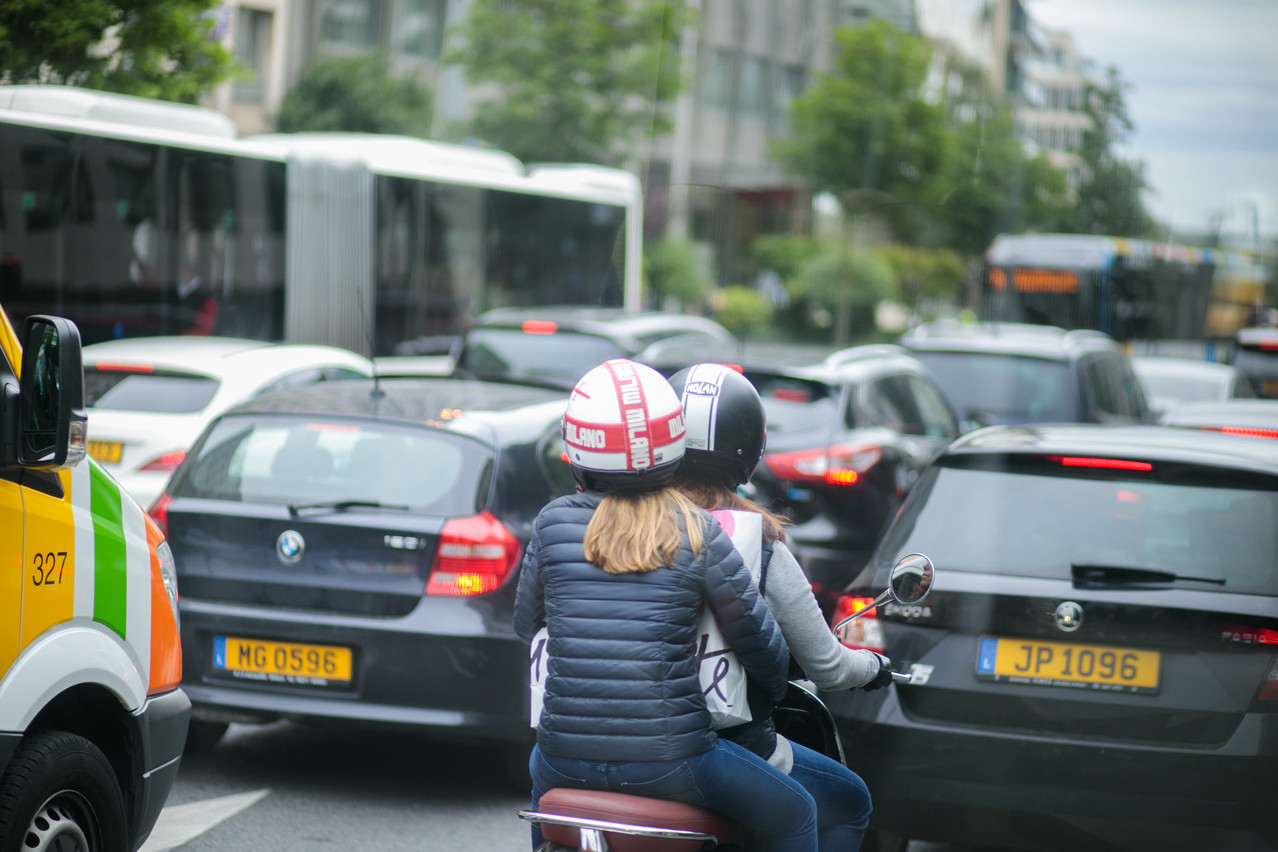If you drive or take the train on Friday morning, you may have the subjective impression that there are fewer people on the road, and that many people choose the last day of the week to telework. However, this is only an impression, according to the various available indicators.
Starting with those of the Road Administration. On the A3, from the Croix de Bettembourg to Luxembourg, between 1 September and 31 October 2021 (latest data available), and in both directions, there were on average 66,362 cars on Monday, 63,559 on Tuesday, 63,977 on Wednesday, 66,492 on Thursday and 73,807 on Friday. On the A6, from Belgium to Luxembourg, there are 45,508 cars on Monday, 43,945 on Tuesday, 43,575 on Wednesday, 45,969 on Thursday and 51,213 on Friday.
The beginning and the end of the week are therefore, contrary to what one might have thought, busier than the middle of the week. However, this data does not differentiate between peak hours and may be influenced by weekend departures or Friday night outings.
The TomTom data is more recent and provided on an hourly basis. At the highest peak, on Friday 26 November at 6pm, the congestion level was 111% (i.e. the percentage increase in travel time compared to the conventional time). The following Monday, at the same time, it was 84%; on Tuesday at 5pm, 82%; on Wednesday at 5pm, 81%; on Thursday at 5pm, 65%; and on the following Friday, 3 December, it rose to 85%, this time at 4pm.
As many people on Fridays as before the crisis
Google, however, provides data on journeys between home and work only, taking all modes of transport into account. Vincent Hein, an economist at the Idea Foundation, has used them to calculate the change for each day of the week compared to the same days over a pre-covid reference period, from 3 January to 6 February 2020.
Here again, it is difficult to speak of a telework effect on Mondays or Fridays. In the fourth quarter of 2020, we are at -30.2% on Mondays, -30.5% on Tuesdays, -29.1% on Wednesdays, -28.2% on Thursdays, -26.6% on Fridays. But in the first quarter of 2021, -28.4% on Monday, -28.7% on Tuesday, -28.1% on Wednesday, -27.8% on Thursday and -30% on Friday. In the fourth quarter of this year, which for the time being runs until 29 November 2021, the figures vary slightly from day to day between -13.4% (Monday) and -13.7% (Tuesday). Data for Friday, indicates -13.5% compared to the reference period. This does not necessarily mean that there are fewer people on the roads on Fridays, but that if this is the case, it is proportional to the pre-crisis period.
Still a lot of cars
Although there does not seem to be a weekend effect, teleworking does ease traffic congestion slightly, according to Google data studied by the Idea Foundation. However, this effect is diminishing over time, especially since the beginning of the school year. But it could resume with the resurgence of covid-19 cases. It is not clear either, according to these figures, to what extent the decrease affects car journeys or public transport.
Looking at data from the road administration once more, the conclusion is clear: there are still just as many people on the roads, if not more.
On the A3, between the Croix de Bettembourg and Luxembourg, between 1 September and 31 October 2021, the average number of cars per working day was 66,954. Over the same period in 2019, the number was 63,239. Between Belgium and Luxembourg, the number of cars have increased from 43,667 to 46,103.
Teleworking is not a panacea
TomTom's data show a decrease in the average level of traffic jams on the roads in 2021 compared to 2019. However traffic jams have increased during rush hour in recent weeks.
For example, on Friday 26 November, the level of congestion was 111%, compared to 53% in 2019 and 30% in 2020. On Monday 29 November, it went from 55% in 2019 to 33% in 2020 and then 84% in 2021. The pattern is repeated on Tuesday 30 November: 82% at 5 p.m. in 2021, compared to 74% in 2019 and 41% in 2020.
Although teleworking had , it seems to have been used much less since the beginning of the school year in 2021. The latest data from the Idea Foundation shows a telework rate of 41% in the second quarter of 2021, but only residents are taken into account.
At the height of the crisis it was 52%. But this is not the only explanation, according to Vincent Hein: “Even with a high teleworking rate, we have a renewed mobility. When you telework, you also travel. To pick up your children from school or to go shopping. The fact that people telework doesn't mean they won't take the car anymore.
While it is one of the levers to alleviate mobility problems, it would not be a panacea, according to him.
This story was first published in French on . It has been translated and edited for Delano.
